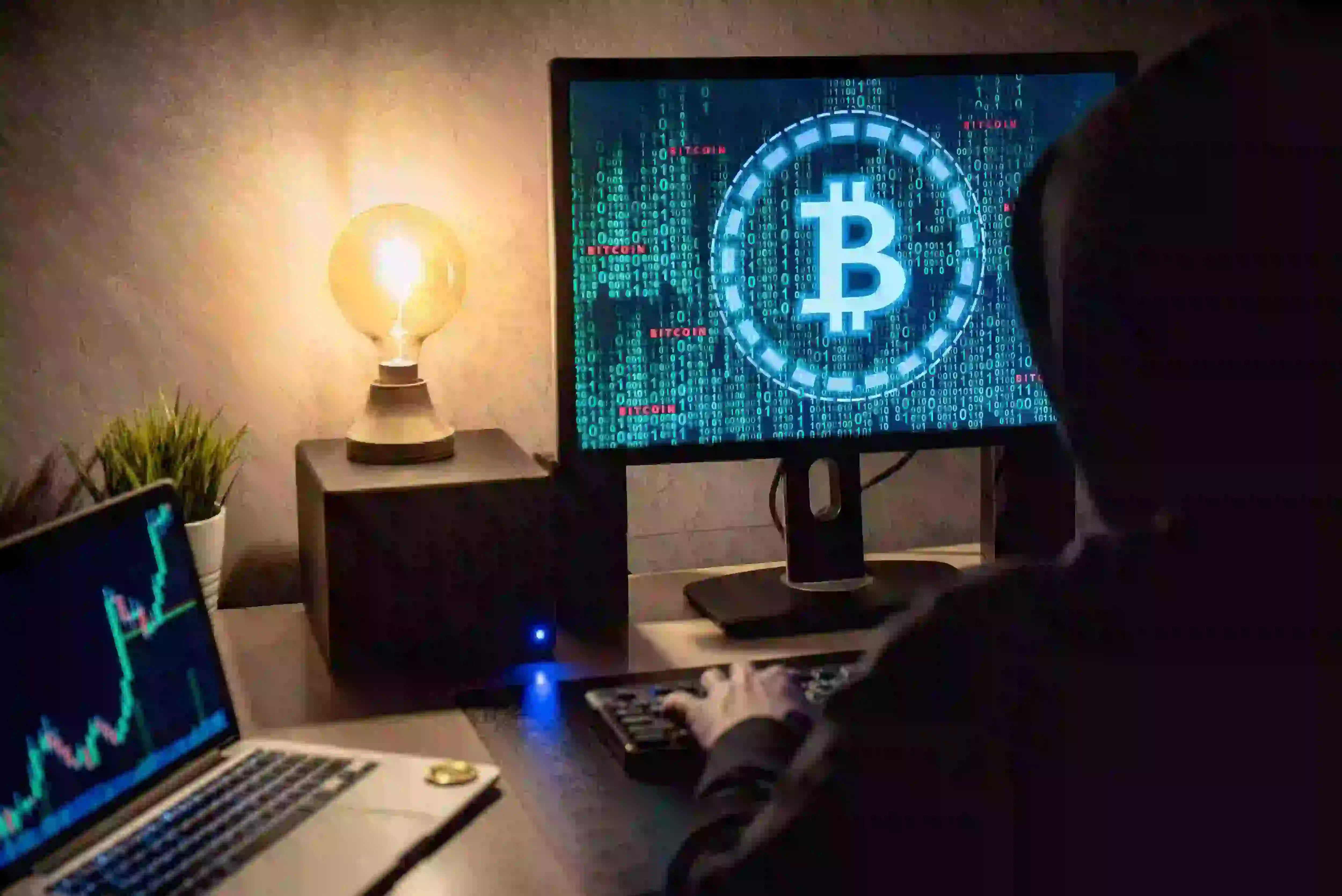Introduction to Security Threats in the World of Cryptocurrencies
In the rapidly evolving landscape of cryptocurrencies, one aspect that continues to pose significant challenges is the issue of security. As digital assets gain popularity and adoption, they attract not only legitimate investors but also malicious actors seeking to exploit vulnerabilities in the system. So, what is the largest crypto theft? We will delve into crypto theft, exploring the mechanisms behind such illicit activities and the crucial importance of robust security measures.
How Crypto Thefts Occur
Cryptocurrency thefts can occur through various means, each targeting different points of weakness within the ecosystem. One standard method is hacking centralized exchanges where cryptocurrencies are bought, sold, and stored. These exchanges are attractive targets for cybercriminals due to accumulating significant digital assets in a single location. When successful, such hacks can lead to massive losses, affecting the exchange operators and their trusting customers. Another method employed by hackers is through phishing attacks and social engineering. By deceiving users into revealing their private keys or login credentials, attackers gain unauthorized access to cryptocurrency wallets. Once inside, they can transfer funds from the victim's accounts, leaving them little to no recourse. So, what is the largest crypto theft?
The Importance of Security in the Cryptocurrency Industry
As the blockchain technology behind cryptocurrencies continues to advance, so do the methods employed by hackers. The industry must stay ahead of these threats and prioritize security measures. Failing to do so risks investors' financial well-being and undermines cryptocurrencies' credibility and long-term viability. In recent years, several high-profile crypto thefts have shaken the industry and served as stark reminders of the need for robust security practices. Learning from past incidents, the crypto community has been actively working to strengthen the overall security infrastructure and raise awareness about the potential risks involved. So, what is the largest crypto theft? We will explore some of the largest crypto thefts in history, examining their impact on the industry and the lessons learned. By equipping ourselves with knowledge and adopting best security practices, we can strive to make the crypto space more resilient and secure in the face of evolving threats.
Notorious Crypto Heists
Mt. Gox: The Groundbreaking Heist
So, what is the largest crypto theft? The infamous Mt. Gox hack is the largest crypto theft in history. Founded in 2010, Mt. Gox (short for "Magic: The Gathering Online eXchange") started as a platform for trading Magic: The Gathering cards but eventually transitioned to one of the world's largest Bitcoin exchanges. In 2014, Mt. Gox fell victim to a devastating cyber attack that resulted in the loss of approximately 850,000 Bitcoins, worth over $450 million. The hack went undetected for a significant period, allowing the perpetrators to siphon off vast amounts of digital currency. The aftermath of the Mt. Gox hack was catastrophic. The exchange filed for bankruptcy in Japan and later in the United States, leaving thousands of customers in despair as their funds seemingly vanished. The incident severely damaged public trust in cryptocurrencies, and regulators worldwide began scrutinizing the industry more closely.
Bitfinex: The Hack That Shook the Market
In 2016, Bitfinex, one of the largest cryptocurrency exchanges, experienced a significant security breach. Hackers exploited vulnerabilities in the exchange's multi-signature wallet architecture, resulting in the theft of approximately 120,000 Bitcoins. The Bitfinex hack sent shockwaves through the crypto community and impacted Bitcoin's price and overall market sentiment. Following the incident, Bitfinex issued a token called "BFX" to its affected customers, representing the value of their stolen funds. Over time, the exchange repurchased these tokens from the market, making efforts to reimburse its users for their losses.
Kucoin Heist: A Massive Attack on an Exchange
In September 2020, the cryptocurrency exchange Kucoin became the target of a sophisticated cyber-attack. Hackers exploited vulnerabilities in the exchange's hot wallets, gaining access to private keys and subsequently siphoning over $280 million worth of various cryptocurrencies. The Kucoin heist ranks among the largest cryptocurrency exchange hacks in history. In response to the attack, Kucoin immediately took measures to enhance its security infrastructure and initiated an extensive investigation to trace the stolen funds and identify the culprits. The incident highlighted centralized exchanges' ongoing challenges securing their platforms against determined attackers. It also raised concerns about the need for more robust security measures and the importance of exchanges promptly disclosing such incidents to their users and the broader community.
Lessons Learned and Moving Forward
The Mt. Gox, Bitfinex, and Kucoin heists provided harsh lessons to the cryptocurrency industry. These incidents underscored the vulnerabilities of centralized exchanges and emphasized the necessity of implementing robust security measures, such as cold storage solutions and multi-factor authentication. These crimes have led to huge changes in investor confidence, resulting in large changes in asset prices. Calculating the change in investor confidence at critical times in the crypto world is possible with our Fear and Greed Index, which you can find among our PlasBit tools. As the industry evolves, exchanges and users must remain vigilant and proactive in safeguarding their assets. By learning from these high-profile heists and taking collective responsibility for security, the crypto community can work towards creating a safer and more resilient ecosystem for digital assets. We will explore various methods for tracing stolen cryptocurrencies and efforts to recover the stolen funds and how, at PlasBit, we can help you with the safest infrastructure for your crypto investments and cashouts.
Tracing Stolen Cryptocurrencies and Recovery Efforts

Tracing Stolen Crypto: The Quest for Accountability
When a cryptocurrency heist occurs, the immediate question on everyone's mind is, "Can the stolen funds be traced?" Unlike traditional financial systems, where banks can freeze or reverse transactions, cryptocurrencies operate on decentralized and immutable blockchains. This characteristic poses challenges and opportunities for tracing and recovering stolen funds.
Blockchain Transparency and Analysis Tools
Blockchain's public ledger offers an unprecedented level of transparency. Each transaction is recorded on the blockchain and is accessible to anyone. Cryptocurrency analytics firms and law enforcement agencies have developed sophisticated tools to track the movement of stolen funds. By analyzing transaction patterns and following the flow of funds through different addresses, they can potentially identify the perpetrators.
Tumbling and Mixing Services
To obfuscate the trail, hackers often use tumbling or mixing services, which combine stolen funds with other cryptocurrency holdings to make it harder to trace the origins of the stolen coins. These services aim to break the link between the initial transaction and subsequent ones, complicating the task of investigators.
Challenges in Identifying the Culprits
While blockchain analysis can reveal the path of stolen funds, it may only sometimes lead directly to the culprits. Cybercriminals frequently use techniques such as routing transactions through multiple countries and employing privacy-focused cryptocurrencies to mask their identities further. Sometimes, they may cash out stolen cryptocurrencies through various means, such as peer-to-peer platforms or privacy-centric exchanges.
Cooperation Between Exchanges and Law Enforcement
When a cryptocurrency theft occurs, exchanges often collaborate with law enforcement agencies and cybersecurity experts to trace the stolen funds. Timely reporting of incidents is crucial, as it enables exchanges and investigators to act swiftly and implement measures to prevent the further dispersal of stolen cryptocurrencies.
Seizures and Asset Freezing
In some cases, law enforcement agencies can successfully identify and seize stolen cryptocurrencies or assets purchased with stolen funds. However, this process involves navigating legal complexities across multiple jurisdictions and challenges arising from the borderless nature of cryptocurrencies.
Reimbursement Initiatives
Certain exchanges and organizations have initiated reimbursement programs to compensate affected users for their losses. Although such initiatives can help restore confidence and mitigate the financial impact on victims, they do not guarantee full recovery of the stolen funds.
A Continuing Battle for Crypto Security
Tracing stolen cryptocurrencies and recovering the funds is an ongoing battle for the crypto community. While blockchain's transparency offers valuable insights for investigators, cybercriminals continue to adapt and employ sophisticated techniques to evade detection. The industry's collaborative efforts and advancements in blockchain analysis and security practices will enhance cryptocurrency security and deter potential thieves. As the crypto landscape evolves, the importance of proactive measures and education to prevent thefts cannot be overstated.
Safeguarding Your Crypto Assets: Best Practices and Security Measures
As the risks of crypto theft persist, crypto holders need to take proactive steps to secure their digital assets. Implementing robust security measures can significantly reduce the likelihood of falling victim to cyber-attacks and theft.
Utilize Hardware Wallets
Hardware wallets are physical devices that store private keys offline, away from internet connectivity. They offer an extra layer of security by keeping the keys isolated from potential online threats like hackers and malware. Hardware wallets are considered one of the safest methods to store cryptocurrencies, especially for long-term holdings. PlasBit offers the safest wallet for crypto users. All the funds are stored offline in cold wallets, ensuring peace of mind for our users.
Set Up Multi-Factor Authentication (MFA)
Enabling multi-factor authentication (MFA) adds a layer of protection to your crypto accounts. With MFA, you must provide a secondary authentication method, such as a one-time code sent to your phone and your regular password. It makes it significantly more challenging for hackers to gain unauthorized access to your accounts. On our platform, we enhance this security measure, and you can easily set it up with Google Authenticator.
Keep Software and Devices Updated
Regularly update your software, operating systems, and crypto-related apps on all your devices. Developers often release security patches and updates to address vulnerabilities. By staying up to date, you can minimize the risk of falling victim to known exploits.
Avoid Phishing Scams
Be cautious of phishing attempts, often in emails or websites impersonating legitimate crypto services. Never click on suspicious links or provide anyone with your private keys or login credentials. Always verify the authenticity of the website or platform before entering sensitive information.
Diversify Crypto Holdings
Avoid keeping all your crypto holdings in a single wallet or exchange. Diversify your assets across multiple wallets and platforms to spread the risk. This way, even if one wallet or exchange is compromised, your entire crypto portfolio won't be at risk.
Practice Caution with Third-Party Services
When using third-party services like crypto exchanges or portfolio trackers, thoroughly research their security measures and reputation. Opt for reputable platforms with a history of reliable security practices.
Educate Yourself and Stay Informed
Stay informed about the latest security threats and best practices in crypto. Regularly update your knowledge about new scams and potential vulnerabilities. Being well-informed will enable you to make informed decisions and take appropriate actions to protect your crypto assets. At PlasBit, you can find all the educational information, tools, and news about the crypto market. You can learn more on our blog, where we constantly share articles about several Web3 topics.
Safeguarding the Future of Cryptocurrency
As cryptocurrencies continue gaining prominence, so will the attempts to steal them. Safeguarding your crypto assets is a shared responsibility that requires vigilance, continuous learning, and proactive action. By adopting best practices and security measures, crypto holders can protect their digital wealth and contribute to the overall security and resilience of the crypto ecosystem. At PlasBit, we can help you in your crypto journey: With our exchange, wallet, debit cards, tools, and analysis, you can have all the knowledge and security to grow or cash out your crypto assets. The future of cryptocurrency relies on a secure and trustworthy environment. As technology and security measures advance, the crypto community must work collaboratively to ensure that crypto theft becomes increasingly challenging for malicious actors. By staying alert and prioritizing security, we can collectively safeguard the future of this revolutionary financial landscape.







